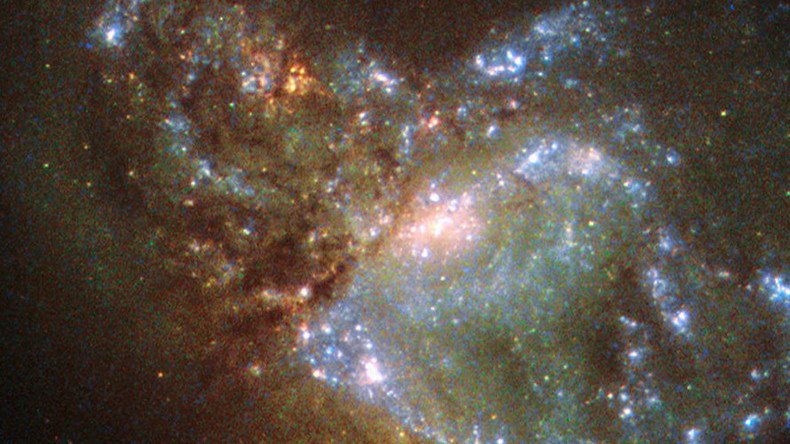Hubble Telescope snaps a pic of two galaxies becoming one

NASA astronomers are sneaking a look at a new galaxy forming right as we speak, all thanks to the Hubble Space Telescope. For the first time, its unique camera has been witnessing the process of two galaxies merging into a completely new one.
The Hubble’s Wide Field Planetary Camera 2 has focused on galaxy NGC 6052, some 230 million light-years away in the constellation of Hercules.
It has been classified as an abnormal single structure, but Hubble’s recent stunning images have changed astronomers’ theories. It is really two galaxies that have been drawn together like magnets and eventually collided. So, they are now still merging together right in front of astronomers’ eyes.
Not all about #StarWars: Biggest real space breakthroughs of 2015 https://t.co/6zDMvQAiL6pic.twitter.com/rd1d5jjlIj
— RT America (@RT_America) December 28, 2015It still has a “chaotic” shape because of the light from stars. Thrown out of their original orbits, individual stars were forced to change their paths. Some of them are now far from the collision area itself.
“Eventually, this new galaxy will settle down into a stable shape, which may not resemble either of the two original galaxies,” NASA said in a statement.
‘Double-bladed #lightsaber’ captured in image of adolescent star by NASA https://t.co/c6vsm7PnXnpic.twitter.com/45vwz0slUb
— RT (@RT_com) December 20, 2015Thanks to the Hubble, NASA has been making breakthrough observations for the past 25 years, since 1990, when it was first launched.












